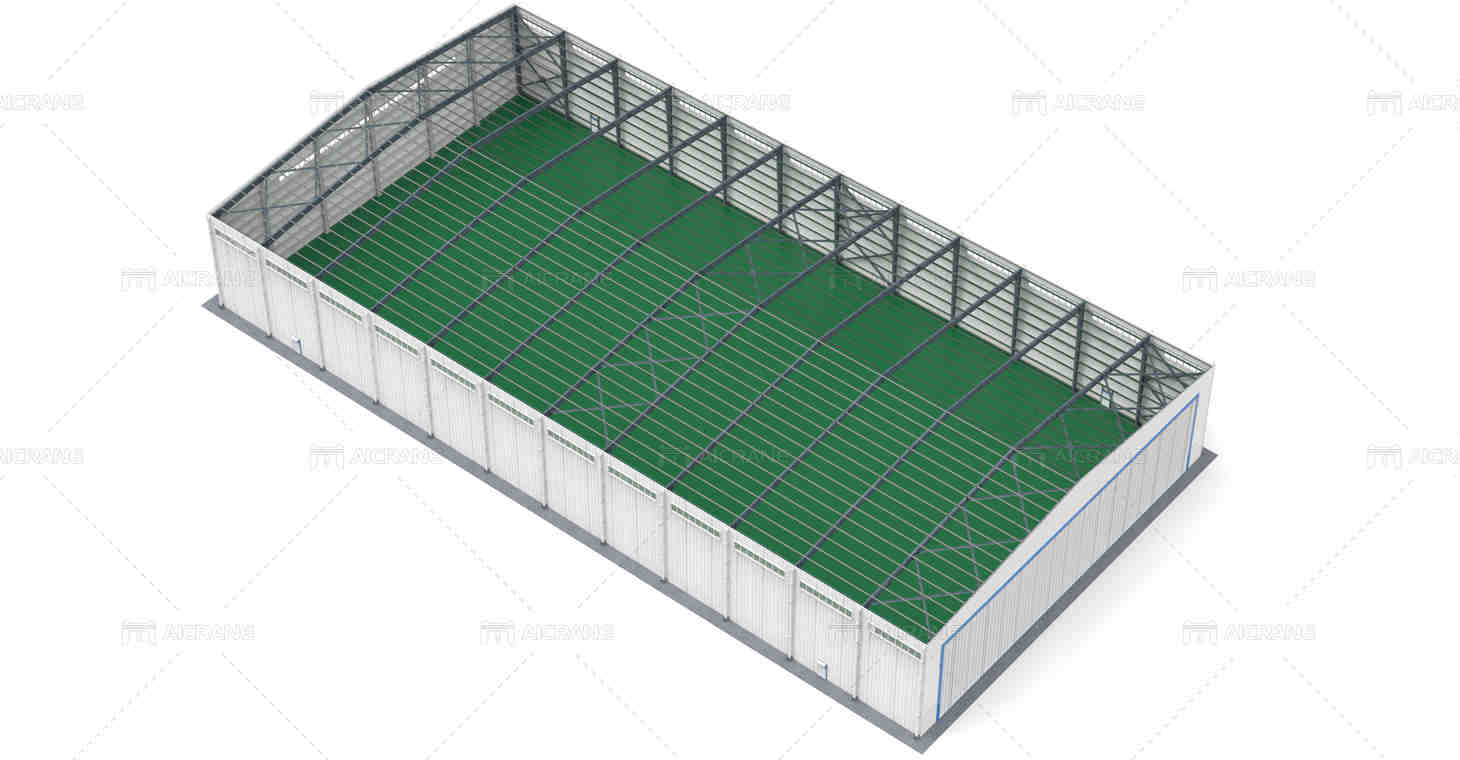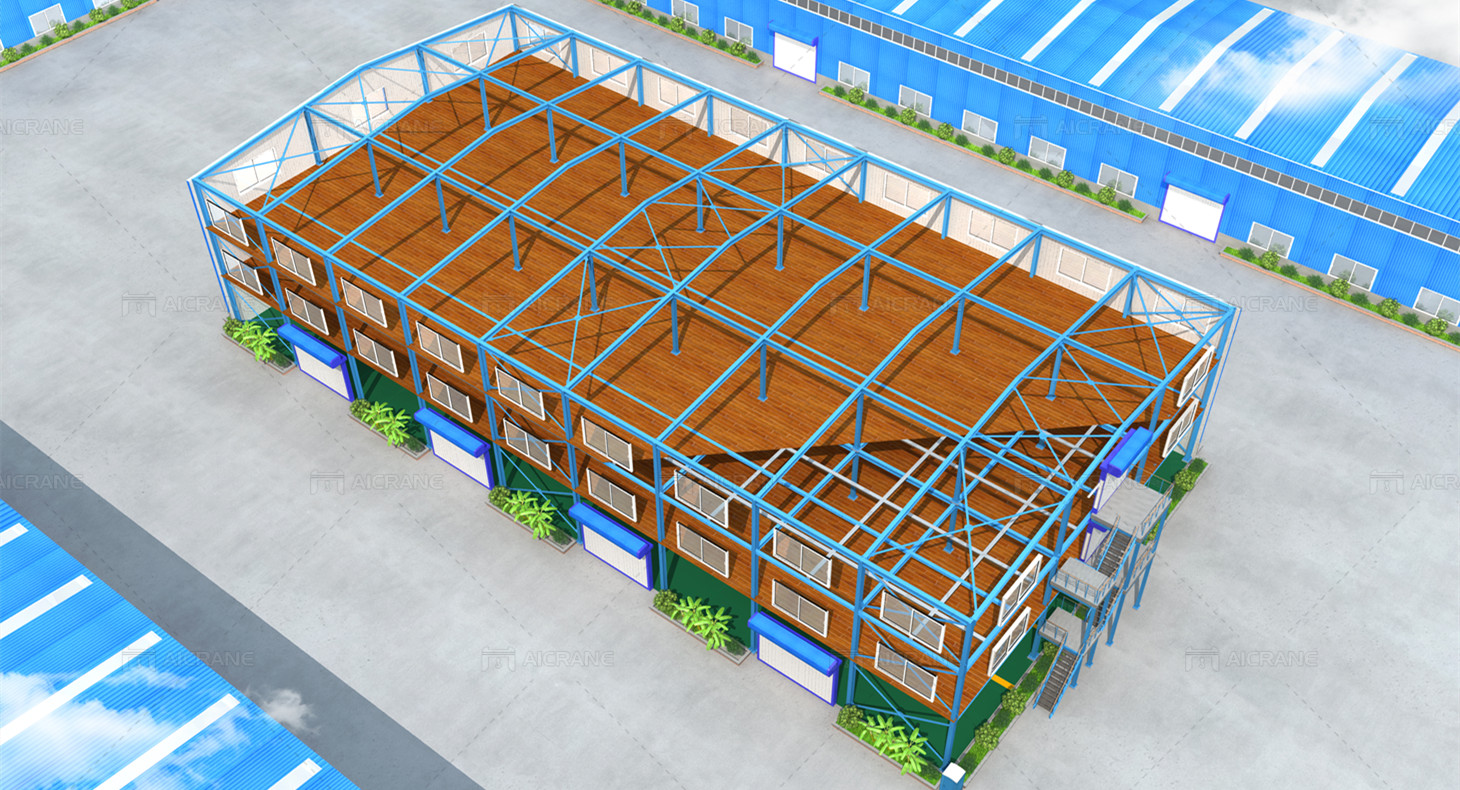Maintaining long span steel structures is critical for ensuring their longevity, safety, and performance. These structures are often used in large buildings, bridges, and industrial facilities, where their failure could have severe consequences. Proper maintenance involves regular inspections, preventive measures, and timely repairs. Here are detailed tips for maintaining long span steel structures.

Regular Inspections
Scheduled Inspections: Establish a routine inspection schedule based on the structure’s age, usage, and environmental exposure. Typically, inspections should be conducted at least annually, with more frequent checks in harsh conditions.
Visual Inspections: Conduct thorough visual inspections to identify any obvious signs of wear, corrosion, or damage of long span steel structure. Pay close attention to joints, connections, and areas exposed to moisture or chemicals.
Detailed Assessments: Use tools such as ultrasonic thickness gauges and magnetic particle inspection (MPI) to assess the internal condition of the steel. These methods can detect cracks, voids, and other subsurface defects that are not visible to the naked eye.
Document Findings: Keep detailed records of all inspections, including photographs and notes on any issues found. This documentation is vital for tracking the progression of wear and for planning maintenance activities.
Corrosion Prevention and Control
Protective Coatings: Apply protective coatings such as paint, galvanization, or specialized corrosion-resistant coatings to steel surfaces. Regularly inspect these coatings for signs of wear or damage and reapply as necessary.
Cathodic Protection: In environments prone to corrosion, such as marine or industrial settings, consider using cathodic protection systems. These systems use sacrificial anodes or impressed current to prevent corrosion.
Drainage Systems: Ensure that thesteel structure has adequate drainage systems to prevent water accumulation, which can accelerate corrosion. Clean and maintain gutters, downspouts, and drainage channels regularly.
Environmental Controls: In enclosed steel structures, control the internal environment to minimize humidity and reduce the risk of condensation on steel surfaces. Dehumidifiers and proper ventilation can be effective.
Structural Monitoring
Load Monitoring: Install sensors to monitor the loads and stresses on the steel structure. These sensors can provide real-time data and alert you to unusual or excessive forces that could indicate potential issues.
Deflection and Vibration Monitoring: Use sensors to measure deflection and vibrations. Excessive movement can indicate structural problems that need to be addressed promptly.
Fatigue Monitoring: For steel structures subjected to cyclic loads, such as bridges or crane steel structures, implement fatigue monitoring systems. These systems can detect the early signs of metal fatigue and prevent catastrophic failure.

Maintenance of Joints and Connections
Bolt and Rivet Inspections: Regularly check bolts and rivets for signs of loosening, wear, or corrosion. Tighten or replace as needed to maintain the structural integrity.
Weld Inspections: Inspect welded joints for cracks or other defects. Non-destructive testing methods, such as ultrasonic or radiographic testing, can help detect hidden flaws.
Lubrication: Lubricate moving parts, such as expansion joints and bearings, to ensure smooth operation and prevent wear. Use appropriate lubricants recommended by the manufacturer.
Cleaning and Debris Removal
Surface Cleaning: Regularly clean the steel surfaces to remove dirt, debris, and contaminants that can accelerate corrosion. Use mild detergents and water for general cleaning, and avoid harsh chemicals that can damage protective coatings.
Debris Removal: Remove debris such as leaves, twigs, and bird droppings from the steel structure. Accumulated debris can retain moisture and promote corrosion.
Pest Control: Implement pest control measures to prevent birds, rodents, and insects from nesting or causing damage to the steel structure.
Addressing Environmental and Climatic Factors
Weather Protection: In regions with extreme weather conditions, protect the steel structure from snow, ice, and wind. Use windbreaks, snow guards, and other protective measures as necessary.
Seismic Considerations: In earthquake-prone areas, ensure that the steel structure is designed and maintained to withstand seismic forces. Regularly inspect and reinforce connections and joints to meet current seismic codes.
Fire Protection: Apply fire-resistant coatings and ensure that fire protection systems, such as sprinklers and alarms, are functional. Regularly inspect and maintain these systems to prevent fire damage.
Preventive Maintenance
Regular Maintenance Tasks: Develop a preventive maintenance plan that includes routine tasks such as tightening bolts, lubricating moving parts, and repainting exposed surfaces.
Component Replacement: Plan for the periodic replacement of components that have a limited lifespan, such as bearings, seals, and gaskets. Regular replacement can prevent unexpected failures and extend the steel structure’s life.
Proactive Repairs: Address minor issues promptly before they escalate into major problems. Small cracks, loose connections, or minor corrosion spots should be repaired as soon as they are detected.
Training and Safety
Staff Training: Ensure that maintenance personnel are properly trained in inspection and maintenance techniques for long span steel structures. Regular training updates can keep staff informed about the latest best practices and technologies.
Safety Protocols: Implement and enforce strict safety protocols for maintenance activities. Provide appropriate personal protective equipment (PPE) and ensure that all work is performed in accordance with safety regulations.
Professional Assistance
Consulting Engineers: Engage consulting engineers for complex inspections and maintenance tasks. Their expertise can help identify potential issues and recommend effective solutions.
Specialized Contractors: For tasks such as welding, coating application, or structural repairs, use specialized contractors with experience in maintaining long span steel structures.
Maintaining long span steel structures requires a comprehensive approach that includes regular inspections, preventive measures, and timely repairs. By implementing a robust maintenance plan, you can ensure the safety, performance, and longevity of these critical structures. Proper maintenance not only protects the structural integrity but also enhances the value and functionality of the asset, ensuring it serves its intended purpose for many years to come.